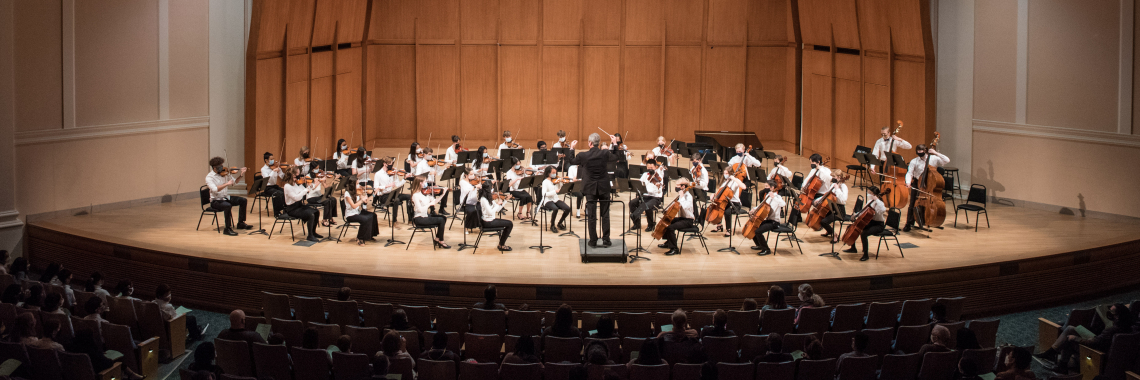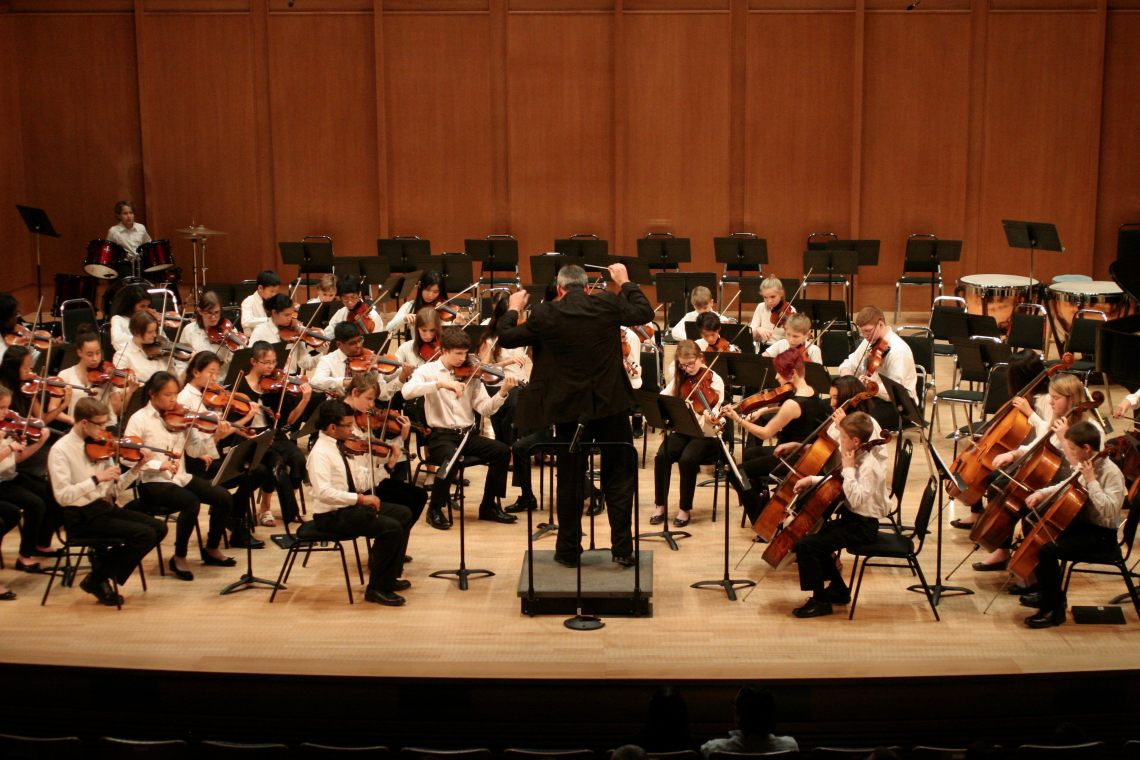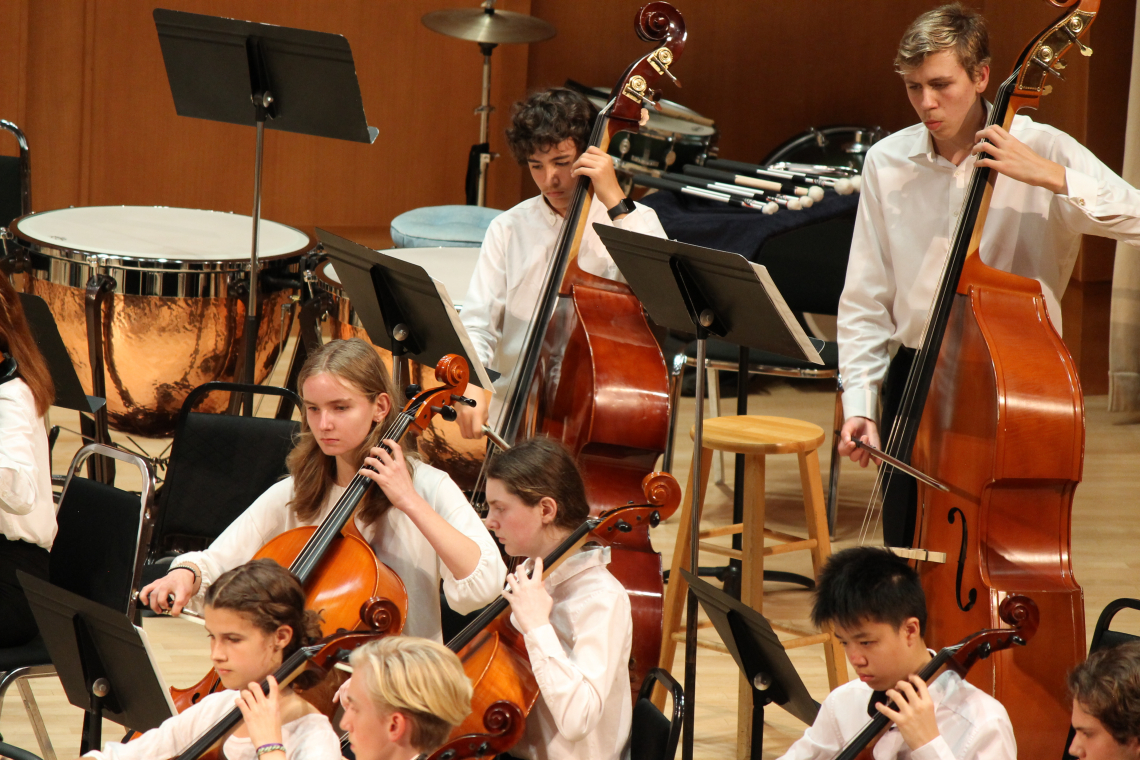CSO
Students generally spend more than one year in each ensemble. We welcome students taking lessons through the Duke University String School and students taking private lessons in the local community to participate in the DUSS String Orchestras.
The Concert String Orchestra is a string ensemble with violin, viola, cello, and bass students who have mastered the skills learned in the Intermediate String Orchestra (ISO). Students in this ensemble will perform challenging pieces of different musical styles and wide dynamic ranges. The repertoire of the Concert String Orchestra will build on skills learned in the Intermediate String Orchestra and include more advanced orchestral techniques such as trills, double stops, clean passagework (16th notes), and comfort playing and shifting in 1st through 5th positions. Students participating in CSO should have a sense of musical style and period (i.e. differences between playing Baroque music versus Romantic music), ability to play rubato, while developing beauty and power of tone.
Audition Prerequisites:
Students auditioning for Concert String Orchestra should have a mastery of prerequisites listed for the Intermediate String Orchestra. Students should have a proficiency in sight-reading in first and third position up to 3 sharps and 3 flats and be able to play comfortably in first through fifth positions. Violists should be able to play in both alto and treble clef. Cellists should be able to play in tenor clef.
Audition Guidelines:
- A scale demonstrating ability to correctly shift to 5th position and play multiple notes in one bow, such as multiple slurs or martelé bow strokes.
- Three minutes of a solo piece of your choice. Memorization of the scale and solo piece is preferred. Students will be asked to play a sight-reading example.
- Students interested in being a leader will play excerpts chosen each year for each section during audition weekend. Excerpts are sent to registered students approximately 1 month before the audition dates. Auditions for leadership occur each year, and students who were leaders the previous year will also need to audition for leadership if they are interested in being leader again.
- Violin leaders come from the 1st violin section and must audition into the 1st violin section in order to be a leader. Violinists who are already in the 1st violin section of their orchestra will play a scale, leadership excerpts and will be asked to play a provided sight reading excerpt. Violin leaders may rotate between leading the 1st and 2nd violin sections.
- Students interested in being a leader will play excerpts chosen each year for each section during audition weekend. Excerpts are sent to registered students approximately 1 month before the audition dates. Auditions for leadership occur each year, and students who were leaders the previous year will also need to audition for leadership if they are interested in being leader again.
- Pieces should demonstrate the use of shifting, vibrato, and students should be comfortable in all parts of the bow. Examples of appropriate solo repertoire include:
- Violin: The Boy Paganini by Mollenhauer, Vivaldi G minor Concerto, Sarabande by Bohm, Meditation from Thais, Accolay Concerto, Haydn G major Concerto, Bach Double Concerto.
- Viola: Bach Concerto no. 1, Brahms Hungarian Dance, Suzuki Book 4-5 repertoire
- Cello: J. B. Breval Sonata (1st or 2nd movement), Sonata in E minor Op. 1 No.2 first or second movement by Benedetto Marcello, Tchaikovsky Chanson Triste, Suzuki Cello Book 4 or 5 pieces, Bach Suites No. 1 & 2.
- Bass: 2-octave scale, pieces from the second half of George Vance's "Progressive Repertoire volume 2" which demonstrate a command of 1st-4th/thumb position, Marcello sonatas, Pichl Concerto, Eccles Sonata in G minor, Vivaldi Six Sonatas for Cello, Capuzzi Concerto in F major.




